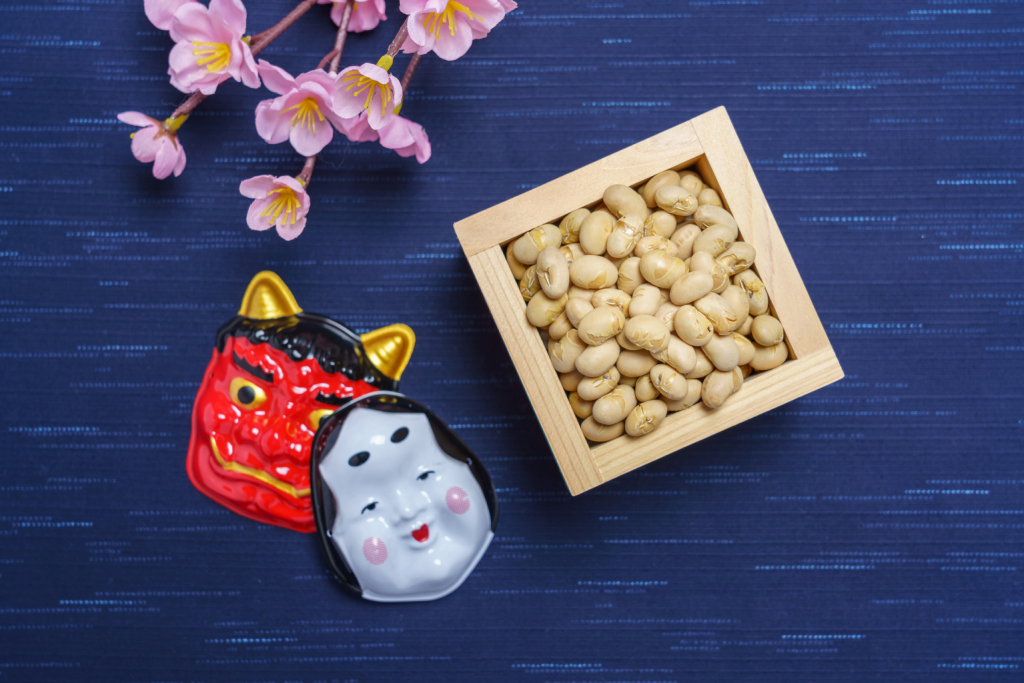About Setsubun and Its Demons
Setsubun is a special ritual performed to banish bad luck, disease and evil spirits from the previous year and to invite good luck and good health for the year ahead.
These evil spirits are depicted as oni, a troublesome kind of supernatural Japanese demon that could also be interpreted as a kind of ogre or troll. Their specific attributes and characteristics vary greatly but the general oni checklist includes: two horns growing from the head; red, blue, or green skin; terrifying strength; and most likely carrying a brutal iron club called a kanabo – imagine a big, long baseball bat with spikes. Other oni features may include sharp teeth and claws, long wild hair, and often some form of Fred Flintstone-style tiger print loincloth.
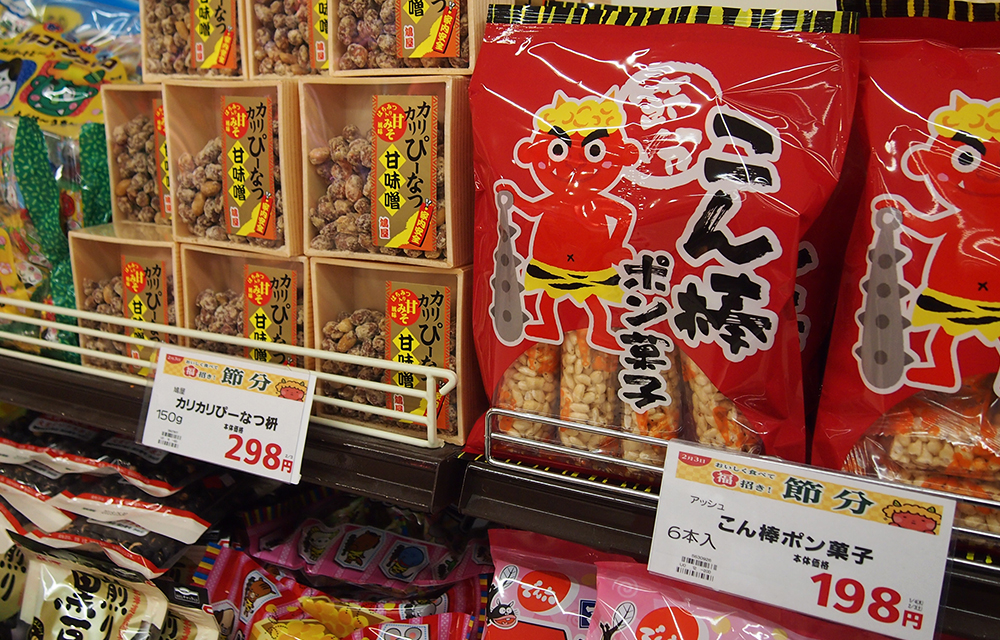
How to do Mamemaki
In order to chase away any lurking oni and make sure any bad vibes stay safely away from your house, many Japanese families participate in a mamemaki (bean-throwing) ritual. Put simply, it involves throwing roasted soybeans. One family member dresses up as the oni (just the free paper mask is sufficient) and will be chased out of the house by the rest of the family throwing beans at the “demon” whilst chanting, “Oni wa soto! Fuku wa uchi!” (Demons get out! Good fortune come in!) before they slam the door shut.
It’s customary to have the beans loaded up in an asakemasu (wooden sake box), but throwing straight from the konbini packet will do. You can also do the bean-throwing just outside the front door if you don’t want to find beans scattered across the house for the rest of the week.
Traditionally the bean-throwing was undertaken by a male of the household of the corresponding zodiac year, so if you happen to have a Year of the Rat guy in your house, you should get them involved for extra good luck. These days, anything goes, but it’s common for Dad to be relegated to oni duties whilst the children gleefully do the throwing – or are traumatized with fear, depending on how good his disguise is.
Setsbun in Japanese Schools
If you know anyone who works at a kindergarten in Japan, or actually just anyone who ever went to a kindergarten in Japan, ask them about their Setsubun memories and you are guaranteed to be regaled with stories of terrified toddlers screaming and sobbing as they were terrorized by menacing oni who “trespassed” into their daycare facilities. You can also find a lot of video evidence of this online – I promise the clips are for the most part as life affirming as they are disturbing.
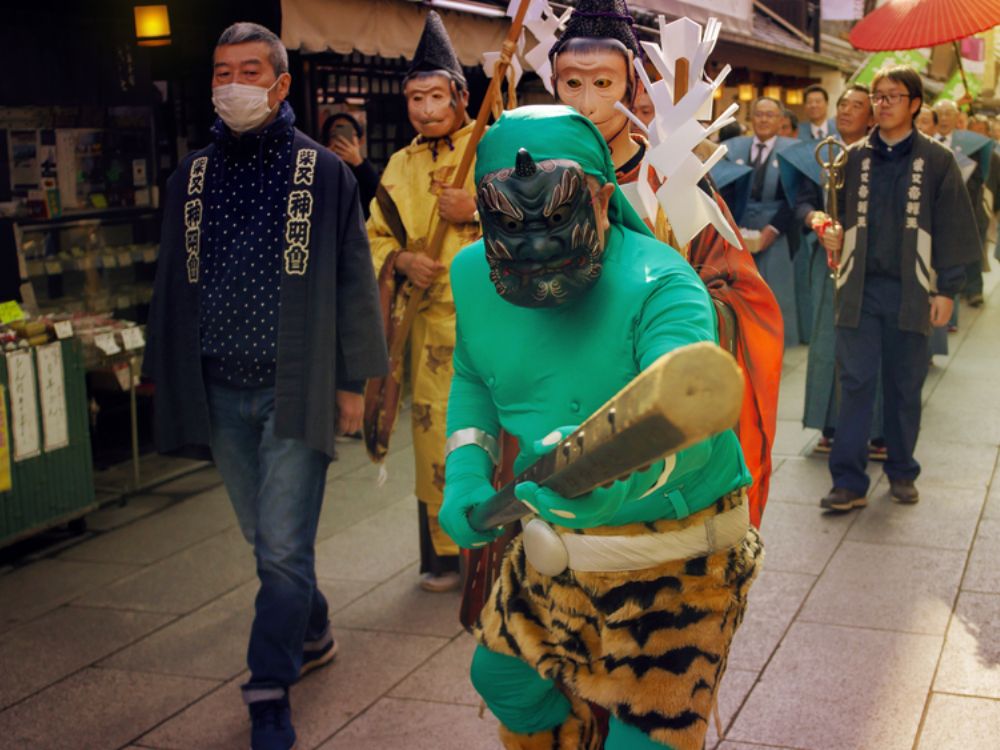
Setsubun at Shibamata Taishakuten Temple in Tokyo
The Biggest and Best Setsubun Events in Tokyo
Aside from the “do it at home” version, many shrines and temples across Japan typically hold Setsubun celebrations that are open to the public
At a typical event at some of the more famous locations, such as Zojoji Temple in Minato or Ikegami Honmonji in Ota City, celebrities, sumo wrestlers and local dignitaries throw loose beans or packets of lucky beans and sometimes even sweets, gifts and prizes out from a stage or balcony down onto the shouting crowds below.
If you’re planning to attend an outdoor mamemaki event, be sure to wrap up warm and beware of flying objects (obviously). Another top tip is to take along an empty shopping bag for a better chance of catching something and avoid getting involved in a ground level scrum. You should also be careful to take note of any variations to the “Oni wa soto! Fuku wa uchi!” chant, as some ceremonies are only focused on the good luck, and omit the demons altogether.
Key Events Around Tokyo
Public Setsubun festivals can draw large crowds of visitors for a variety of reasons, some also incorporating additional rituals, performances and community spirit.
- Asakusa’s Sensoji Temple’s Setsubun Party includes a special dance by the Seven Lucky Gods.
- Zojoji Temple, overlooked by Tokyo Tower, holds a Setsubun Tsuinashiki known for its high caliber star power, attracting numerous fans hoping to catch a glimpse of their favorite entertainers along with their beans.
- Ikegami Honmonji in Ota-ku holds special significance for Japanese wrestling fans as it is the burial place of the great Rikidozan, “The Father of Puroresu,” and each year sees many professional wrestlers participate in a particularly powerful bean-throwing ritual.
- Shimokitazawa’s Tengu Matsuri incorporates Setsubun rituals, although those are somewhat overshadowed by the parade of gigantic tengu masks through the streets.
Note: Please check your local municipal website for the latest updates on Setsubun celebrations.
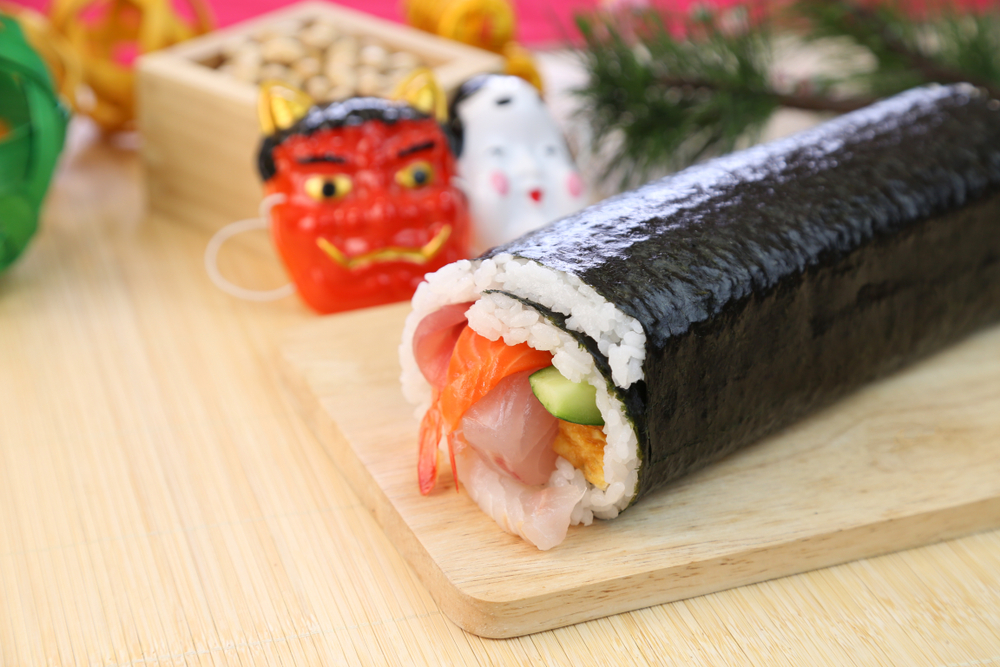
More Setsubun Traditions to Double Your Luck
After you’ve banished your demons at home or at the temple, it’s supposedly good luck to eat the number of beans corresponding to your age, it’s up to you if you want to extend the five-second rule and recycle the beans from the mamemaki aftermath, or just open a fresh packet.
Regional Variations
There are also a few regional variations of Setsubun activities including the ehomaki “lucky” sushi roll which originated in the Kansai region but has since become a nationwide phenomenon. You can buy your standard ehomaki at any convenience store or supermarket or even treat yourself to a “premium” ehomaki – no guarantee you’ll have more luck but it might be more delicious. The whole roll should be eaten uncut, in complete silence whilst you face the lucky direction for the year: 2024 is east-northeast.
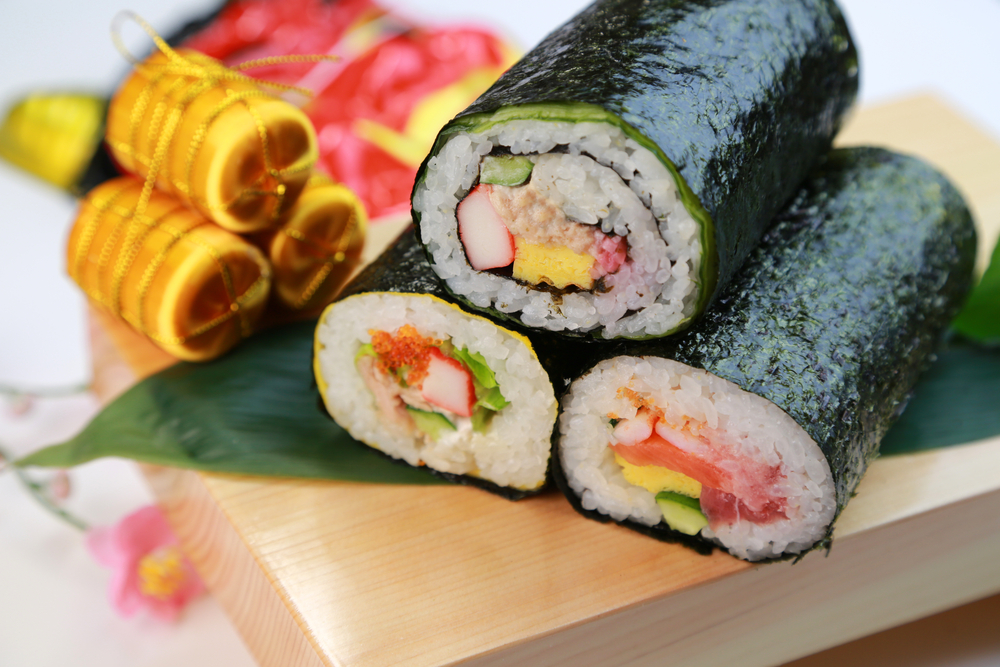
Ehomaki sushi
Other Foods to Eat at Setsubun
If you’re worried that the beans aren’t enough to keep the oni away, then you can also try eating some grilled sardines as well as making a rather gruesome-looking decoration called hiiragi iwashi by attaching one of the fish heads to a holly branch and placing it outside your door.
It’s common knowledge that oni don’t like smelly fish or anything pointy (like holly leaves…) that might poke out their eyeballs. The hiiragi iwashi talisman is mainly a Kanto and Nara tradition and certainly isn’t common practice in Kyushu or Hokkaido, so if you do try it there be warned that your neighbors might have some serious concerns.
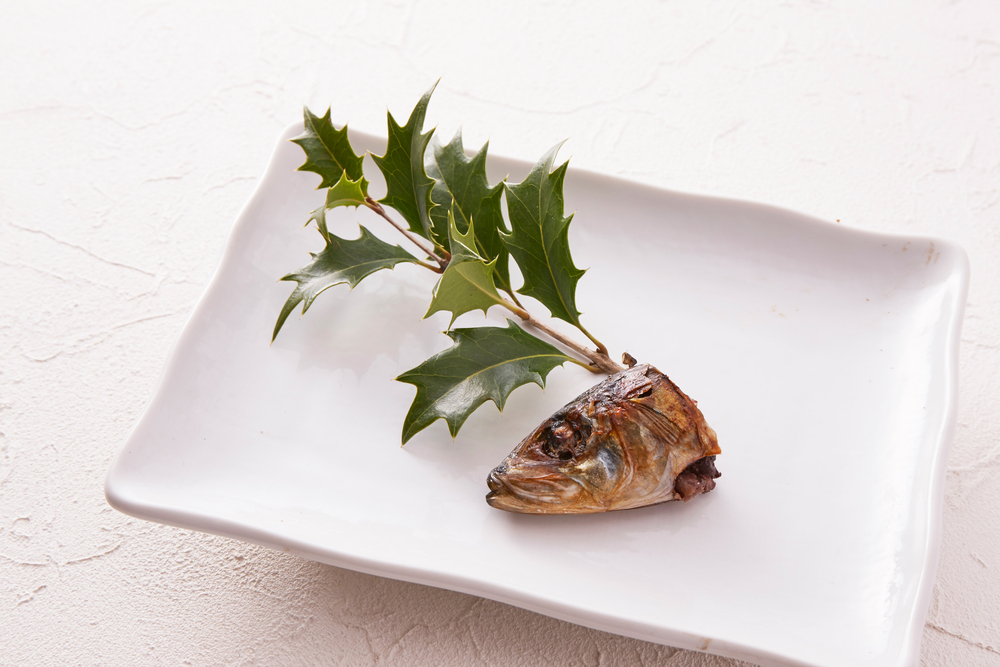
Hiiragi Iwashi
How to Celebrate Setsubun in 21st Century
While the rituals and celebrations in temples, homes and kindergartens remain the same, Setsubun is slowly being co-opted as a seasonal merchandising opportunity, much like Christmas, Halloween and Valentine’s Day. Premium ehomaki and deluxe oni masks are becoming increasingly popular and you can easily pick up a head-to-toe oni costume at Don Quijote stores.
Nighttime revelers can also enjoy festivities. Osaka’s nightclub scene has a handful of Setsubun obake-themed events where you can dress up, drink and dance through the end of winter.

